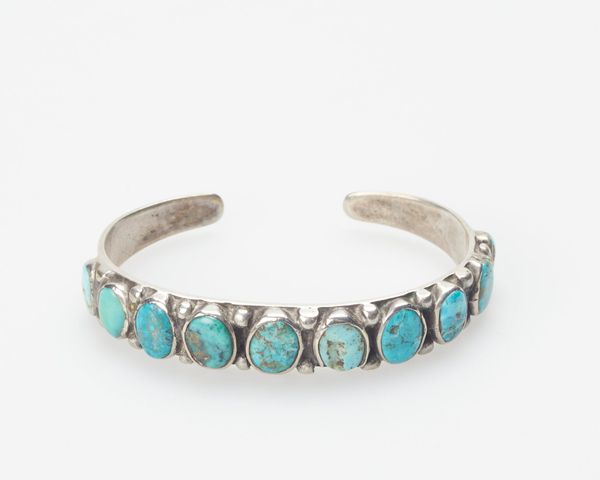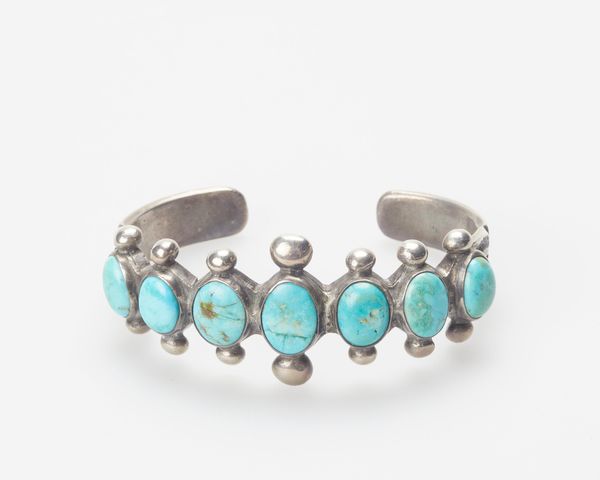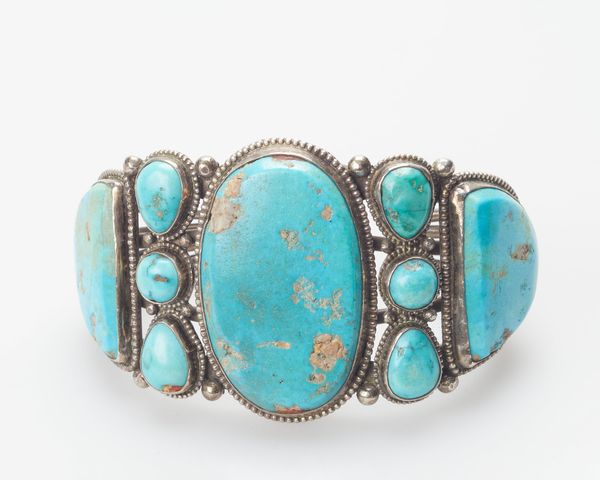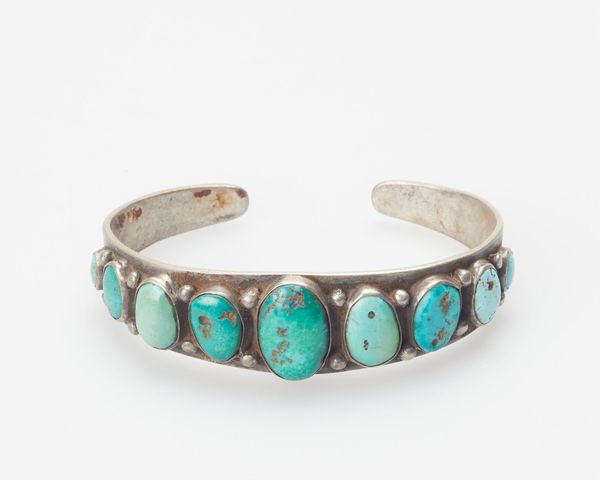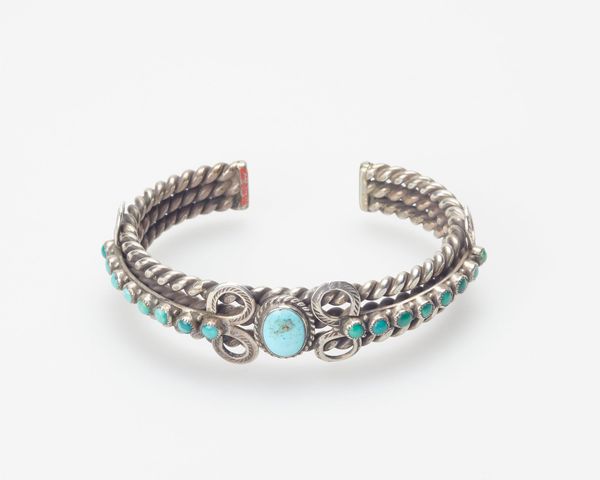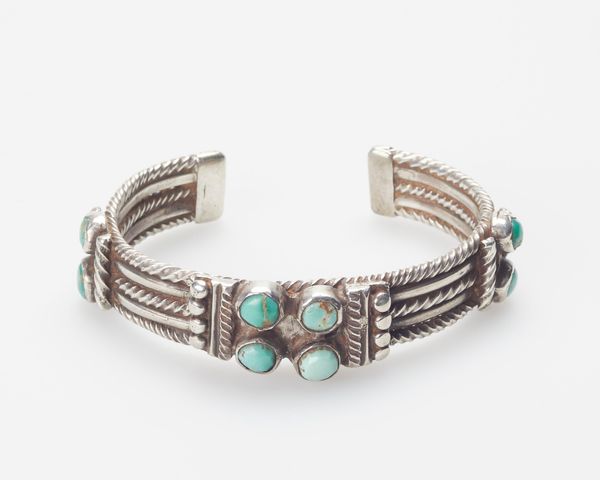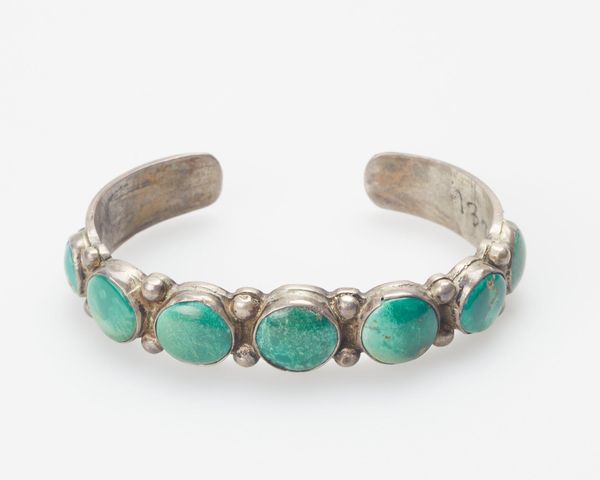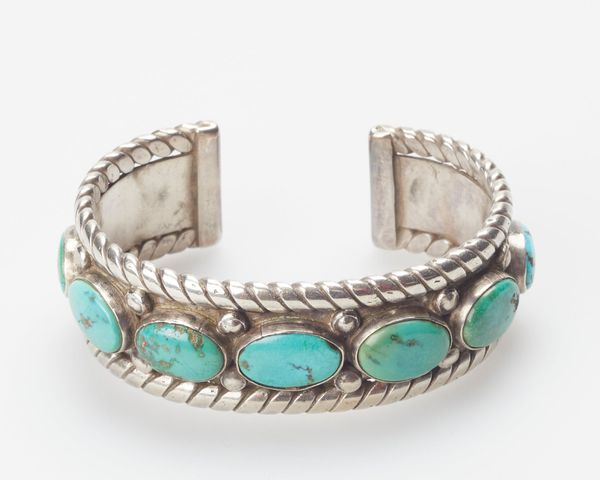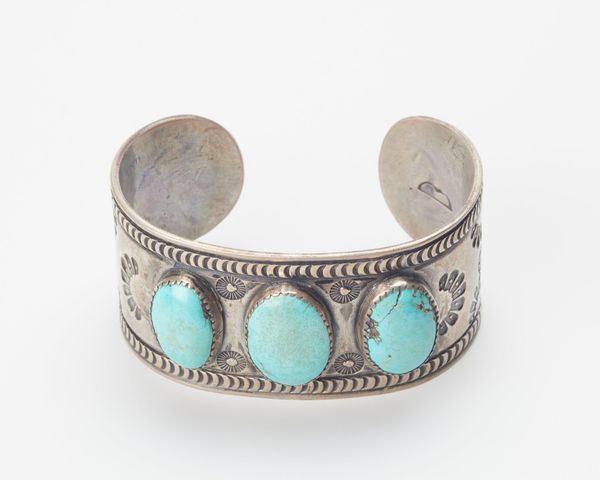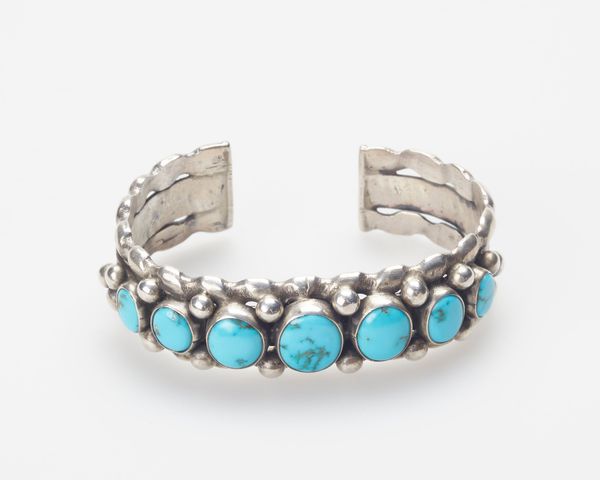
silver, metal
#
silver
#
metal
#
indigenous-americas
Dimensions: 2 5/8 x 1 in. (6.7 x 2.5 cm)
Copyright: No Known Copyright
Editor: Here we have a silver bracelet, probably from the late 1940s, crafted by Bert Puhuyestiwa. The metal is punctuated by a series of striking turquoise stones. It's gorgeous, yet its simplicity lends it a peaceful quality. What symbolic meaning can we unpack here? Curator: The use of turquoise is particularly compelling. It appears frequently in Indigenous cultures as a powerful symbol, connected to the sky and water – both vital for life. Think of its presence, emotionally: calming like a clear sky, refreshing like cool water. Do you notice any patterns in the arrangement of the stones? Editor: Yes, there are larger, oval stones, each framed by smaller, round ones, and all mounted on the silver band. It’s quite symmetrical and balanced, which gives it that feeling of serenity, I think. Curator: Symmetry is crucial, echoing the harmony sought within the natural world, especially through traditional practices. These gems aren’t just decorations; they function as conduits. Through symmetry and its calming essence, the stones invoke blessings, ensure well-being. Each design element serves as an indicator of cultural memory and identity. Can you envision someone wearing this piece? Editor: I can. Perhaps wearing it during ceremonies? Knowing the depth of symbolism adds a richer layer to what I initially perceived as just a pretty piece of jewelry. Curator: Precisely. Jewelry transcends mere adornment; it becomes a tactile expression of one's heritage, a walking emblem of enduring beliefs. I would describe it as a manifestation of visual history. Editor: That's a very enlightening approach. Looking closely at design elements can indeed uncover fascinating meanings, connecting us more deeply to both the artwork and its cultural roots.
Comments
No comments
Be the first to comment and join the conversation on the ultimate creative platform.


